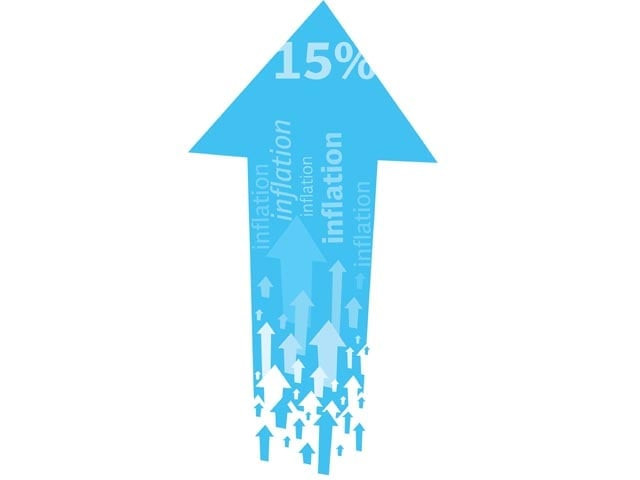Inflation clocks in above 15% in December
Surge in prices comes mainly on the back of a phenomenal increase in rates of food and energy.

The Consumer Price Index (CPI) – an instrument used to monitor the price trend over a given period – rose by 15.5 per cent in December over the corresponding month of the last year, said Federal Bureau of Statistics Secretary Asif Bajwa, while unveiling the latest inflation figures.
The surge in prices comes mainly on the back of a phenomenal increase in rates of food and energy. In a span of just 12 months, the average price of tomatoes has increased by almost 151 per cent, while that of onions has jumped 125 per cent.
The surge in prices of these two items – essential kitchen ingredients – reflects how significantly the household budget increased over the outgoing calendar year. Moreover, fresh milk prices soared 17.7 per cent, meat in excess of 30 per cent, vegetable ghee over 28 per cent, sugar almost 36 per cent and vegetables 30 per cent.
Electricity charges increased 30 per cent over the same period and communication costs swelled 37 per cent, show the statistics.
Although inflation has been recorded over 15 per cent since September 2010, the numbers remain below finance ministry estimates as ministry officials had expected an increase of over 16 per cent in December.
The latest figures endorse the State Bank’s estimates, which had forecast the lowering of inflation December onwards on the back of improvements in food supply chain and subsequent reduction in the rates of essential food items.
Nonetheless, even the central bank has failed to give an exact estimate for inflation in the current fiscal, projecting it between 15 and 16 per cent by end-June.
Month-on-month
The phenomenal increase in prices of food items during the preceding months stalled during December. A dip in rates of food items over November not only restricted yearly inflation below 16 per cent but also resulted in a reduction of 0.5 per cent on a monthly basis.
The official statistics show that prices slipped 0.5 per cent in December over the preceding month. Meanwhile, the finance ministry was expecting a 0.26 per cent increase in inflation in December over November.
The month-on-month reduction in prices was possible due to a dip of over 36 per cent in potato prices and a 20 per cent reduction in onions rates. Due to improvements in the supply chain, vegetable prices reduced almost 16 per cent, sugar 13.5 per cent and the rates of various pulses went down by up to two per cent.
On the other hand, tomato prices soared over 30 per cent, eggs became 10 per cent costlier and cooking oil got dearer by over four per cent.
First half of fiscal 2011
With the latest figures, average inflation for the first six months of the current fiscal (July through December) remained at 14.6 per cent. At the time of announcing the federal budget, the government had targeted inflation at 9.5 per cent by end-June but revised the figure upwards to 14.5 per cent for the financial year (July-June) 2010-11.
The average price increase of 14.6 per in the first half can also be attributed to the surge in food prices. From July through December, pulse moong became costlier by 117 per cent, onions 87 per cent, sugar 53.5 per cent, tomatoes 52 per cent, mash pulse 51 per cent and vegetables 41.7 per cent.
Published in The Express Tribune, January 12th, 2011.



















COMMENTS
Comments are moderated and generally will be posted if they are on-topic and not abusive.
For more information, please see our Comments FAQ